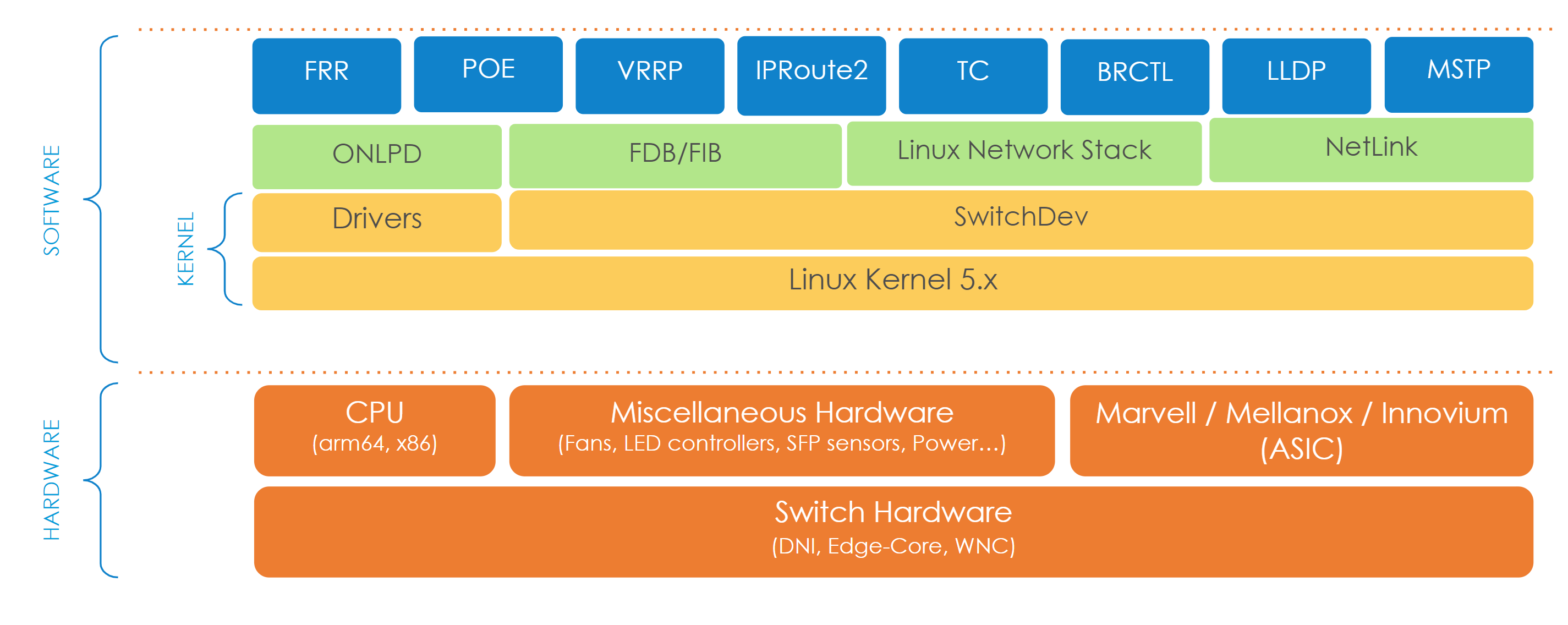- Utilize Linux Kernel, Switchdev and other linux based projects as the basis for the solution (without abstractions and overhead)
- Treat ASIC and Silicon for Networking/Datapath as any other hardware
- Simplify abstractions, API, drivers and low level overhead that currently exists in these switches and other open software.
- Unify the community of Silicon Vendors, ODM, SI, OEM, End Users across many verticals.
- Solve the Networking Operating System challenge for Distributed Enterprise Edge use case and expand into other use cases such as Enterprise Datacenter
Key Tenets of the DENT Ecosystem
- All new inbound code contributions to the DENT Projects MUST be made using GNU General Public License, version 2.0 (SPDX-License-Identifier: GPL-2.0-only). The TSC may approve the use of an alternative license or licenses for inbound or outbound contributions on an exception basis. The process to make an exception is the same as defined in the Section 7.c of the DENT Technical Charter.
- The contributions to the DENT Projects MAY be based on or applicable to any linux distribution such as Ubuntu, Fedora, Debian, Gentoo, etc.
- DENT Projects MUST include support to or be applicable to, at least one edge computing application scenario, apart from any other application scenarios.
- Contributions to the DENT Projects, whenever applicable, MUST use switch device driver model (switchdev) or similar in-kernel methods (where switchdev is not available) to program the target devices (and their ASICs, where appropriate).
- Contributions to the DENT Projects MUST NOT fork the Open Source repositories and develop without upstreaming the changes. The upstream changes MUST be maintained, and downstream work MUST be aligned with the upstream releases.
- If applicable and to the best extent that is possible, contributions to the DENT Projects MUST include a good set of test cases, along with their implementation in the DENT Test framework
- The datasheets of the hardware that are part of the DENT ecosystem MUST be made publicly available. Schematics of these hardware MAY be made publicly available.
Components
Architecture

